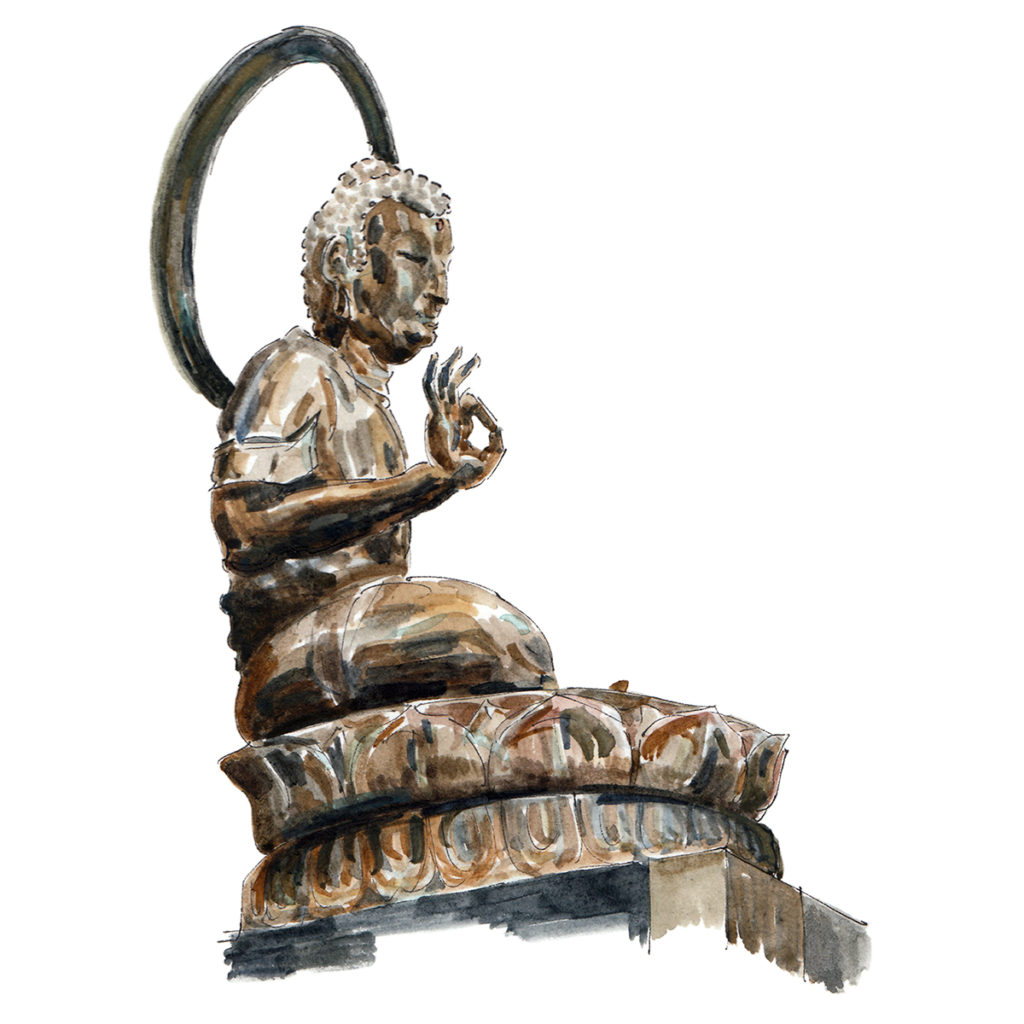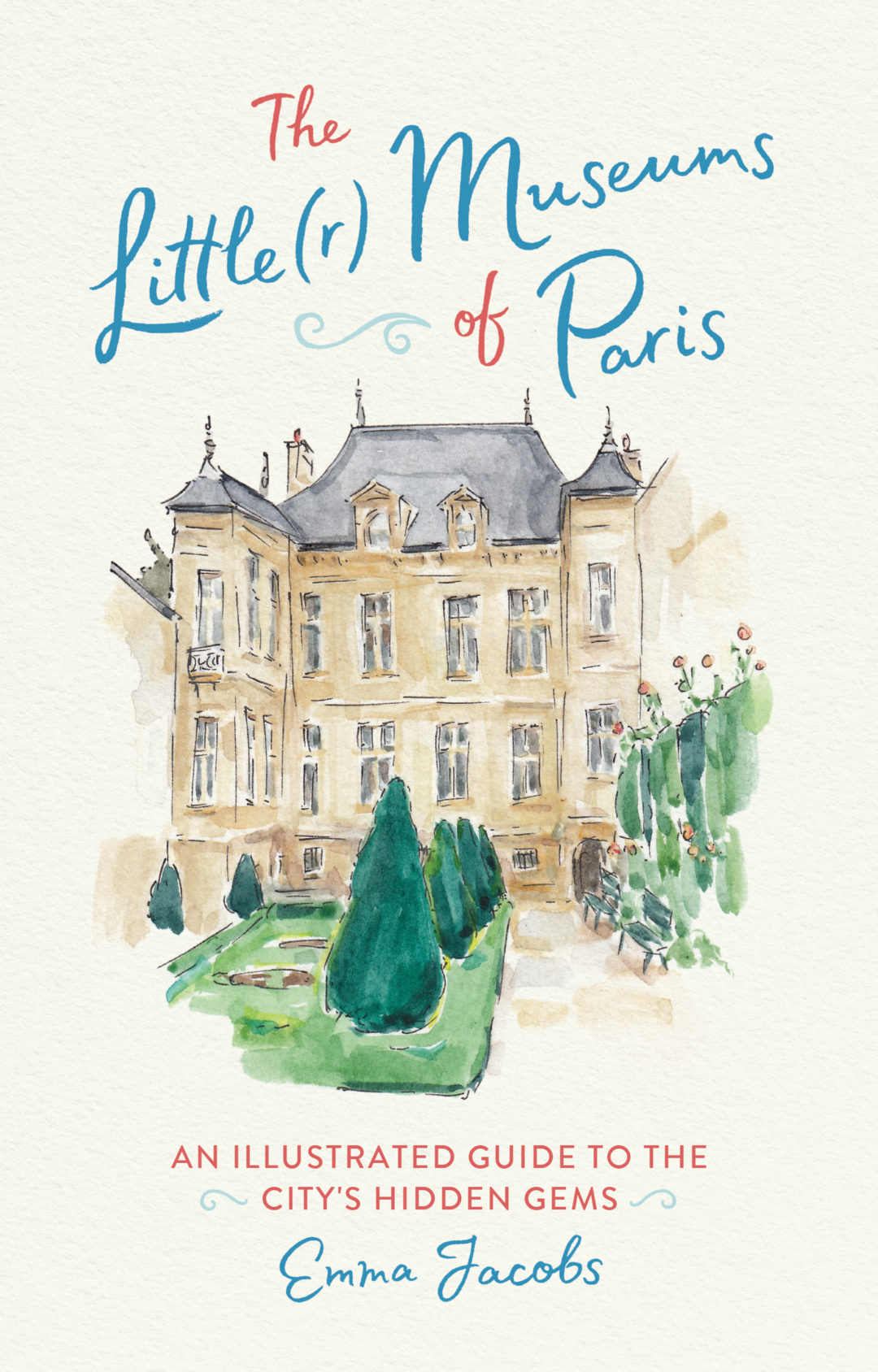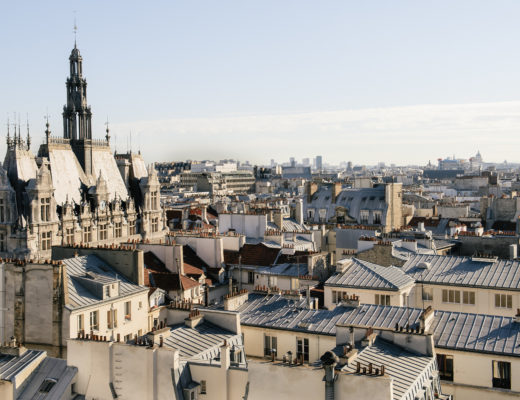It’s not only travelers that are astounded by the sheer number of cultural institutions and art museums in Paris — locals like me could spend their whole lives trying to experience it all. And that includes museums with far less name recognition than the marquee attractions that find their way onto most traveler’s itineraries.
Emma Jacobs, illustrator and multimedia journalist, has cleverly captured those smaller but no less important institutions into one beautiful book, The Little(r) Museums of Paris, which includes brief histories, anecdotes, and a number of watercolor surprises. In anticipation of the book’s release on June 4th, Emma has graciously provided an excerpt that highlights some of the museums whose inspirations go well beyond France.
Order the book and follow Emma on Instagram for more of her work!

Institut du Monde Arabe
INSTITUTE OF THE ARAB WORLD
1 rue des Fossés Saint-Bernard, 5e 01 40 51
38 38
imarabe.org
Tue, Wed, Fri: 10am–6pm | Thu, Sat, Sun: 10am–7pm
Adult: €8 | Under 26: €4
Metro 7 10 Jussieu
At the opening of the Institut du Monde Arabe (IMA) in 1980, then-President François Mitterrand said the project undertaken with member nations of the Arab League represented “the friendship, the French-Arab understanding,” that “the cultures and civilizations should continue to come together.”
This was a politically cautious description of a complicated relationship. Coming out of the oil crisis of the 1970s, and just twenty years after decolonization, France did have ties and familiarity with the League’s member-nations. But that came with historical baggage, particularly France’s colonial involvement in North and West Africa and the Middle East.
French architect Jean Nouvel created an innovative home for the IMA, incorporating visual motifs from the Arab world in a light-filled building with an unusual feature—windows with photoreceptive cells that could respond to the sun to regulate light and heat.
The permanent exhibition originally focused on Islamic art but was redone for the institute’s twenty-fifth anniversary in 2012. It now presents themes including early developments in science and ocean navigation, archaeological finds, and architecture.
Institut Suédois
SWEDISH INSTITUTE
11 rue Payenne, 3e 01 44 78 80 20
paris.si.se
Tue–Thu: 2pm–8pm | Fri–Sun: noon–8pm; Free; Metro 8 Chemin Vert
Sweden’s only cultural center abroad owes its existence to Gunnar Lundberg, Sweden’s cultural ambassador to France in the 1960s. Planning to donate his extensive art collection to his country, he thought the sixteenth-century Hôtel de Marle would provide a suitable showcase. He convinced the Swedish government to purchase the then-dilapidated mansion in the Marais in 1965 and carry out extensive restorations.
Lundberg’s and the institute’s permanent collection highlight artistic exchange between France and Sweden, including five Swedish artists inducted into the Académie Française in the eighteenth century.
Temporary shows of contemporary Swedish artists take place on the lower floors. Another highlight of the institute is its popular, light-filled coffee shop offering tasty Swedish pastries.
Musée national des arts asiatiques-Guimet
NATIONAL MUSEUM OF ASIAN ARTS-GUIMET
6 place d’Iéna, 16e 01 56 52 53 00
guimet.fr
Wed–Mon: 10am–6pm Adult: €11.50 | 18–25 yrs: €8.50 | Under 18: Free
Metro 9 Alma-Marceau
In 1876, industrialist Émile Guimet convinced the French government to give him a diplomatic passport and a letter attesting that he was on an official mission to study Asian religions, then left on a two-year trip across the continent.
“The work of art,” Guimet believed, “does not reveal the secret of its form and the full enjoyment of its beauty without prior knowledge of the myths and symbols.” He first created a museum and library on Asian religions from his personal collection in Lyon but later concluded it deserved the larger public it could reach in Paris. Eventually, the Guimet Museum also received the Louvre’s Asian collections.
The layout of the galleries still emphasizes historical context, following religious and aesthetic movements as they crossed the continent.

Musée Cernuschi
CERNUSCHI MUSEUM
7 avenue Velasquez, 8e 01 53 96 21 50
cernuschi.paris.fr
Tue–Sun: 10am–6pm Adult: €8 | 18–26 yrs: €6 | Student: Free
Metro 2 Monceau
In 1871, Henri Cernuschi and art critic Théodore Duret traveled from France across the United States and sailed from San Francisco across the Pacific to Yokohama.
In Japan, Cernuschi, who had made a fortune in banking, would buy art and antiquities at an exceptional scale. Dealers brought hundreds of antiques for him to review on a daily basis. Cernuschi bought an enormous seventeenth-century bronze Buddha from a fire-damaged temple outside Tokyo, despite objections from neighboring residents.
Duret wrote Impressionist painter Édouard Manet that his traveling companion was bringing back “a collection of bronzes the like of which has never been seen anywhere. There are pieces that will bowl you over; that is all I am telling you.”
Back in Paris, Cernuschi built a town house designed to showcase his collections on the fashionable Parc Monceau. He never returned to Asia but continued to acquire Asian, as well as European, art and artifacts for the rest of his life. He left the town house and all of his Asian art to the city of Paris, which opened the museum in 1898.
Musée d’Art et d’Histoire du Judaïsme
MUSEUM OF JEWISH ART AND HISTORY
71 rue du Temple, 3e 01 53 01 86 53
mahj.org
Tue, Thu, Fri: 11am–6pm | Wed: 11am–9pm | Sat, Sun: 11am–7pm
Adult: €10.50 | 18–25 yrs: €5.50
Metro 11 Rambuteau
While France’s history is well-represented in the museum, the collection actually traces the movement of Jews and Jewish culture throughout Europe, North Africa, the Middle East, and farther afield. Religious objects made in different regions show the assimilation of local artistic traditions—from pagoda-shaped Torah ornaments from a nineteenth-century Iraqi-Jewish community in Shanghai to menorahs with North African geometric motifs.
Many of this institution’s most treasured pieces were assembled by composer Isaac Strauss, considered the first collector of Judaica, in the mid-nineteenth century.
Museum director Paul Salmona said this museum, with its survey of Jewish themes, plays a role in combating prejudices, particularly in a time of resurgent anti-Semitism in France.
“It’s a way of providing a human, cultural reality of Judaism,” he said, “to show the richness and diversity of Jewish cultures.”
Adapted with permission from THE LITTLE(R) MUSEUMS OF PARIS © 2019 by Emma Jacobs, Running Press












